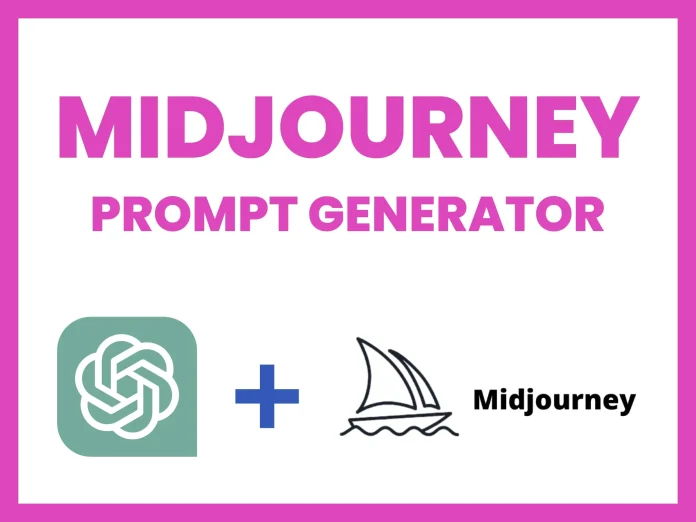Introduction
Every writer, artist, or creative individual embarks on a creative journey that is filled with highs and lows. While the initial spark of inspiration ignites the beginning, the middle part of this journey can be the most challenging to navigate. This is where MidJourney prompts come into play, offering a lifeline to keep your creativity flowing. In this comprehensive guide, we’ll router what MidJourney Prompts are, why they are essential, and how to use them effectively to overcome creative blocks and reach your creative destination.
Table of Contents:
What Are MidJourney Prompts?
MidJourney prompts are creative exercises or prompts designed to rejuvenate your artistic or writing process when you find yourself stuck in the middle of your project. They can take various forms, from written prompts to visual cues, and are a powerful tool to reignite your creativity. These prompts aim to break through the stagnation that often occurs during the midpoint of a creative endeavor.
The Importance of MidJourney Prompts
Why should you care about MidJourney prompts? Well, the midpoint of any creative project can be a perilous zone where motivation wanes, self-doubt creeps in, and you may even consider abandoning your work. However, MidJourney prompts can help in several ways:
Overcoming Creative Blocks: MidJourney prompts provide fresh perspectives and ideas that can help you push past creative blocks and keep your project moving forward.
Maintaining Momentum: They help maintain the momentum you gained during the initial stages of your project, preventing you from stalling.
Enhancing Creativity: By challenging your creativity, these prompts encourage you to think outside the box, resulting in more innovative and original work.
Building Discipline: Regularly using MidJourney prompts can establish a creative routine, helping you stay committed to your project.
Types of MidJourney Prompts
There’s no one-size-fits-all approach to MidJourney prompts, as they can vary depending on your creative preferences. Here are some common types:
Word Prompts: These are single words or short phrases that can inspire new directions or themes for your project. For example, if you’re writing a mystery novel, a word prompt like “betrayal” might spark new ideas for your story.
Visual Prompts: Visual stimuli such as paintings, photographs, or illustrations can trigger fresh perspectives and emotions in your work. Analyzing and interpreting visual prompts can lead to unique insights.
Character Prompts: If your project involves characters, create prompts that delve deeper into their backgrounds, motivations, or conflicts. These prompts can help you flesh out your characters and their arcs.
Setting Prompts: Explore prompts that focus on the settings or environments in your project. Describe a location in detail or imagine how it changes over time, adding depth to your narrative.
Dialogue Prompts: Craft prompts that involve characters engaging in conversations. This can help you develop realistic dialogues and explore the dynamics between characters.
Genre-Bending Prompts: Challenge yourself by incorporating elements from different genres or media. For instance, if you’re a fantasy writer, consider how your story might evolve if it were set in a futuristic, sci-fi world.
How to Use MidJourney Prompts Effectively
Now that you know the types of MidJourney Prompts available, it’s essential to understand how to use them effectively:
Regular Practice: Incorporate MidJourney prompts into your creative routine. Set aside dedicated time, whether daily or weekly, to work on these prompts.
Stay Open-Minded: Approach prompts with an open mind. Don’t dismiss ideas immediately; explore them and see where they lead.
Mix and Match: Combine different types of prompts to create unique challenges. For example, use a visual prompt to inspire a character or a setting.
Challenge Yourself: Push your boundaries with prompts that are outside your comfort zone. If you usually write romance, try a horror-themed prompt to inject new energy into your work.
Journaling: Keep a journal or digital document to record your responses to prompts. This can help you track your progress and revisit ideas later.
Share and Collaborate: Consider sharing your MidJourney prompt responses with fellow creatives or joining online communities where you can exchange ideas and feedback.
Reflect and Apply: After completing a prompt, reflect on how it can be integrated into your main project. Sometimes, a small prompt can lead to a significant breakthrough.
Real-Life Examples
To illustrate the effectiveness of MidJourney prompts, we’ll share real-life success stories from writers, artists, and creatives who have incorporated these prompts into their work. These examples will showcase how MidJourney prompts can lead to unexpected breakthroughs and transformations in creative projects.
Troubleshooting Creative Slumps
Even with the help of MidJourney prompts, creative slumps can still happen. In this section, we’ll discuss common challenges that arise during the creative process and offer strategies for overcoming them. From imposter syndrome to burnout, we’ll provide practical advice to keep you on track.
Conclusion
In the ever-evolving landscape of creativity, MidJourney prompts have emerged as an invaluable tool for artists and writers alike. They bridge the gap between inspiration and completion, helping you navigate the challenging middle stages of your creative journey. By incorporating these prompts into your routine and staying committed to your work, you can overcome obstacles, discover new depths of creativity, and ultimately bring your artistic vision to life. So, embrace the power of MidJourney prompts, and let them guide you toward the finish line of your creative endeavors.





